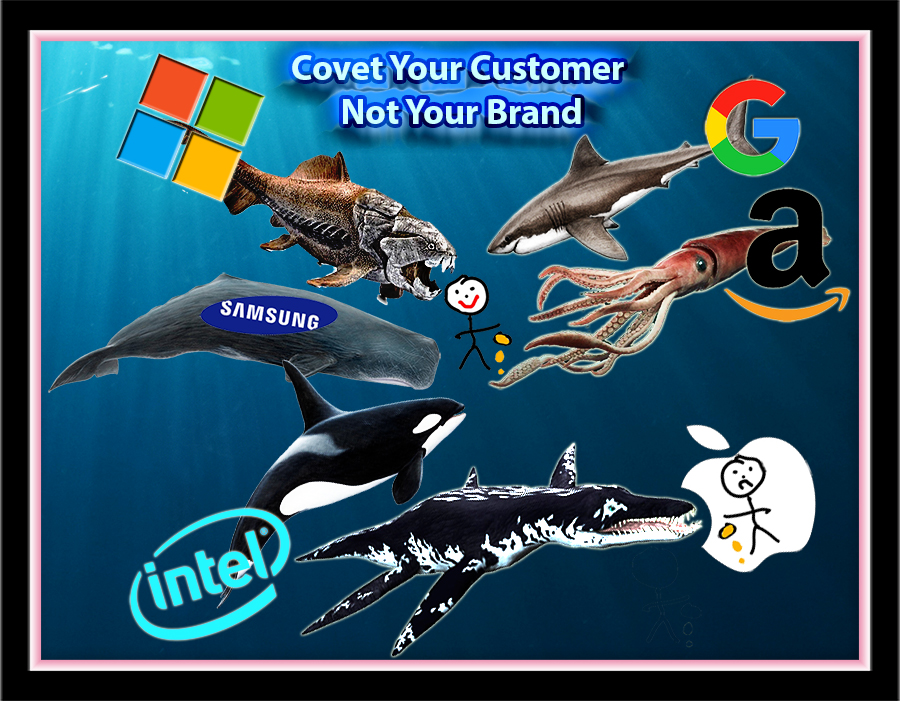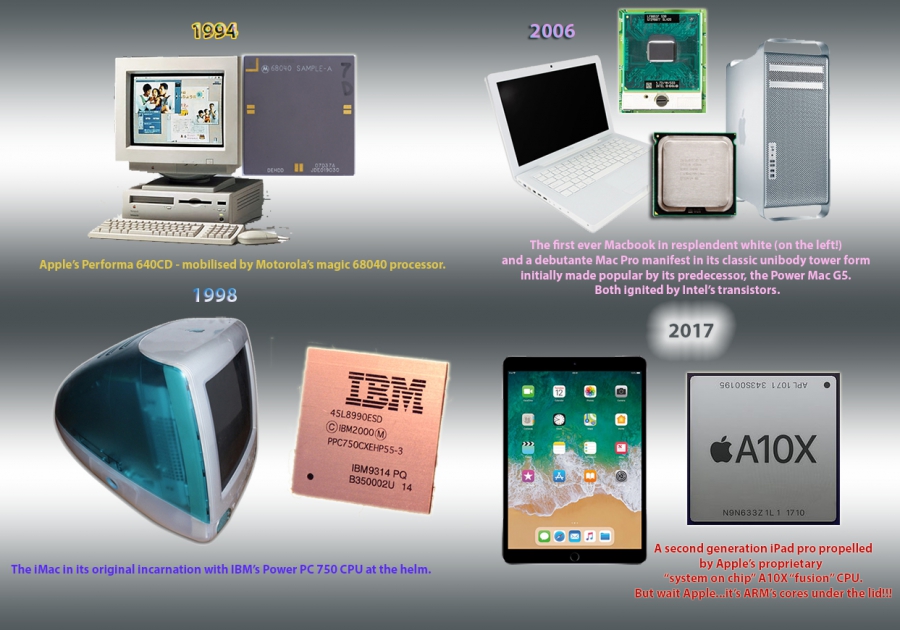App-lex Predator.
No matter how intense the debate amongst self-proclaimed arm chair naturalists as to which apex predator would triumph in the event of a dispute over territory, food or disruptively loud roaring, the “brutal” truth is that such encounters are generally avoided by the animal kingdom’s hardest hitters because neither party would likely escape with a full set of appendages and the prospect of recklessly gambling with one’s life is as repugnant to Polar Bears as it is enticing to drunken brawlers, especially those who benefit from free and dependable health care.
When it comes to humankind, “healthy” capitalism is little different. To ambitious entrepreneurs, aspiring startup companies and established corporations, intense competition is considered crucial to attain and sustain truly “progressive consumerism”. This nugget of board room babble might harbour contextual discrepancies depending on the underlying business, though two key “principals” are consistent throughout communities of suited, screen prodding fat-heads. Evolution and variety.
In the tech industry, for example, a “thriving” market could mean one generating a vast array of products manufactured by a multitude of rival companies, all/every one committed to designing original and “commercially viable” solutions to repeatedly “enhance the experiences” of their loyal and valued customers mere moments after their existing warranties have expired.
Each corporate colossus meticulously monitors its competitor’s activities, learns from their profitable innovations, garners wisdom from their flaws and oversights but never enough to become stagnant clones jealously striving to satisfy identical desires and thus, cause a catastrophic implosion/collapse of the financial food chain.
Far better that one’s failings are another’s fortes, ensuring a diversity of equally worthy commercial philosophies that ultimately provides every potential client with a rich and rewarding choice and even when such a productive equilibrium cannot be achieved, diplomatic and resourceful alliances should be preferable to ruthless takeovers.
To revisit our analogy, it is known in the animal kingdom for alliances to be formed to accomplish a collective goal or repel a common enemy.
A hermit crab for instance, will cunningly “adopt” a sea anemone to fend off fatal teeth and tentacles in return for scraps of its own vittles and a stimulating “life on the road”. Perhaps even more pertinent are the Bottle nosed dolphins that offer their superior eyesight and herding abilities to assist local fisherman, whose capacious nets guarantee them a far heartier portion of mullet than would be possible to harvest on a solo expedition.

Within the realm of cyber capitalism food is supplanted by money, while hunting and gathering techniques take the form of technological indispensables.
Partnerships might be as fleeting as a shootout in a burning saloon and their consequences no less significant, both for victors and victims.
No sooner had a youthful and inspired Bill Gates bid Harvard a premature farewell, Microsoft realised historic fame and fortune by selling its original operating system to IBM, a company then synonymous with the term PC and accounting for over half the computers sold to impressionable home users.
Little did the latter know that an absence of exclusivity would soon result in its canny ally forging similarly profitable deals with sworn enemies. Ambitious upstart Compaq was the first of these, when in 1982, they committed an act of perfectly legal “poaching” by reverse engineering IBM’s propitiatory BIOS, the sole “copyrighted” component that permitted software to utilise its underlying hardware. The procedure, though painstaking in practice, was readily embraced by rival manufacturers wishing to brand their machines as being “IBM compatible” and hence, also capable of exploiting Microsoft’s definitive creation.
Fast forward over three decades to the bleak bitter winter of 2017, when the tyrannical Baron von Intel was compelled to devour humble silicon by forming a union with arch nemesis AMD to forge a mobile grade processor imbued with sufficient graphical prowess to assuage all but greediest gamer and in so doing, preventing a ravenous green-eyed monster from further bolstering his market dominance.
In toiling and tussling to the point it should be no surprise that this article’s primary subject is, once again, our golden delicious demagogue, Apple. A company that resents “strategic collaborations” more than a hoodlum hates advice from a hippy. Ever since Messers Jobs and Wozniak were passionately engaged in establishing the New World Orchard’s nascent roots, they and all others subsequently enlisted to evolve a religion tailored for the style-conscious technophile , would have dreamed of the day when they would fabricate every element upon which it thrived.
The Aquarius project in 1989 marked the first occasion that Apple would attempt to design and engineer its own processor which, had it materialised, would have gracefully avoided over a decade of grudging dependence upon IBM and Motorola, whose “Power PC” branded CPUs beat at the heart of every desktop class Mac released between 1994 and 2005.
Following a slew of production delays, Motorola’s withdraw from chip manufacturing and IBM’s increased focus upon the games console market, this financially fruitful but politically contentious alliance was annulled, abruptly forcing Apple to do what its disciples equated to seeking diet and fashion tips from the Devil, the Grim Reaper and the head of the FBI.
For a dozen humiliating revolutions around Apollo’s life giving orb, every Appolyte that departed their local establishment with the latest Macbook swaddled in a stylishly unstructured carrier-bag or who flaunted a freshly de-boxed iMac Pro in front of their iPhone’s all seeing lens, could no longer definitively denounce those those too poor, too square or too dumb to savour the miracles of forbidden fruit, for beyond their mercurial Operating System and seductive physique the mechanical medleys which also permitted every sad old PC to boot into stupid old windows harboured cores cut from the same cut from the very same wafer. A wafer from which even Apple’s former and formidable ally, IBM, had been compelled to draw sustenance.
As conferences and keynotes droned by with a dreary monotony, indoctrinated journalists argued that alluring aesthetics together with assiduously vetted software and an “infallible quality of service” justified one investing extra for identical horsepower.
As a caustic critic of over-hyped and under-expandable extravagance, it is with a rueful foreboding I must concede that the above claims, though vastly exaggerated, are not entirely baseless and this is where our naturalistic equivalence founders.
Whether you err on the side science of faith or, there can be little doubt that every conscious creature begins its existence with an innate understanding of what it is, what it needs to survive and, with a hint of parental guidance, the means by which to procure it. An albatross for instance, will not observe a basking shark hauling a banquet of shrimps from the ocean and immediately think to itself,
“Goodness, that’s more grub in an day than I get in a week, perhaps I should ditch these wings, evolve fins and somehow pile on around 7 short tonnes of blubber.
By contrast, where Apple goes, others follow. What Apple has, others want. What Apple does, others copy.
Yet, by the summer of 2018, all was not lost.
Microsoft’s mercurial Windows 10 was still a fully-fledged and feature rich OS, capable of empowering a vast array of hardware synergies; from its sleek, home grown surface books endowed with flagship technology and their maker’s seal of approval, to dubious clones plucked from the bulging stalls of a Beijing flea market. Or bespoke beasts clinically configured by boutique builders to ensure their aspiring owner’s a sabbatical of triumphant bench-marking…with at least one top ten result and lastly, the brigade of faithful workstations that ensures a professional hardware hobbyists inane ramblings can be condensed into a single thousand word sentence and broadcast to their enraptured audience in ludicrous definition.
However, this eventful period also gave rise to rumours that Apple intended to sever all ties with Intel, whom it likely regard as a toxic benefactor. Whilst no official declaration disclosed, most suggested the motive to be founded on the declining efficiency of Intel’s processors, which had undergone three architectural revisions but without any proportional reductions made to the die. These, in turn, yielded progressively smaller speed increases and were plagued with manufacturing delays, all of which cast grave doubt over Apple’s desktop-class products while their mobile road-map swept into the distance.
What enabled an iPad Pro to provide enough brunt to become a “daily driver” for many who had previously depended on several devices was also very thing that Apple would depend on to revive the mystique they’d relished during their alliance with IBM and Motorola but with an unprecedented degree of self-sufficiency.
Enter ARM. A company over two decades Intel’s junior and that since its inception, had excelled in the art of extracting the maximum from the minimum and made conservation its unconditional priority. It was ARM’s eco-conscious cores that propelled over 90% of all smart phones and tablets alongside a growing percentage of budget friendly laptops from the likes of LG, Samsung, Google, Asus, Huawei and Sony. Apple’s reliance on ARM ran no further than a license to integrate its core architecture. Thereafter, the methods for both implementation and production would be Apple’s responsibility and as enchanted loyalists to were so keen to point out,the revolutionary Bionic chips that allowed Apple’s iOS devices to to trade credible Geekbench scores with it’s very own Intel powered Macbooks, were an exclusive and untainted design.
Haven’t we wandered a tad wide of our subject? How in the name of garrulous gigahertz does any of this convoluted chronology relate to predators, survival or the Mother nature’s brutal hierarchy? Folks, this is Gigadenza, a place where cryptic surrealism takes unwavering precedence over mundane simplicity. A quaint and quiet corner of cyberspace where little makes sense and proudly draws inspiration from fiction that exists precisely to make no sense at all, except to those who seek nonsense.
No matter, let’s try anyway. At this moment in the eternal tale of toil tears and transistors, Apple was poised to command enough presence, resources and acclaim in the savage sea of commerce to effectively sink to the bottom, open its cavernous mouth, and gleefully observe shoals of blinkered consumers with ever dwindling attention spans willingly into its gargantuan confines. Image alone would soon be Predator X’s bait, pervasive and persuasive enough to ensure a stomach perpetually stuffed with prey and skin so thick it could feed off itself when the going got really tough. Such as that disastrous winter when a shipment of ten million iPhone five hundred’s headed for Mars’s main Apple store got lost in an asteroid storm.
Dear reader, is this really what happened? Did Apple’s militantly sanitised eco-system evolve into an interplanetary autocracy? Were its strongest rivals so severely lacking in ingenuity and conviction as to compound this Orwellian nightmare by “following the leader”? Did Windows 12, 20 and 40 support ever more proprietary and less versatile devices that were themselves, increasingly reliant on “critical” updates fostering dozens of patches, tweaks and algorithmic alterations guaranteed to “improve performance and underpin customer satisfaction” but in practice, frequently wrecked as much as they fixed and were delivered to the user with little or no option to defer? Or did Microsoft and others finally recognise the flaws in the fruity cult’s linear philosophy and elect to entice their prey another way? Somewhere in the event horizon, I’m praying!





